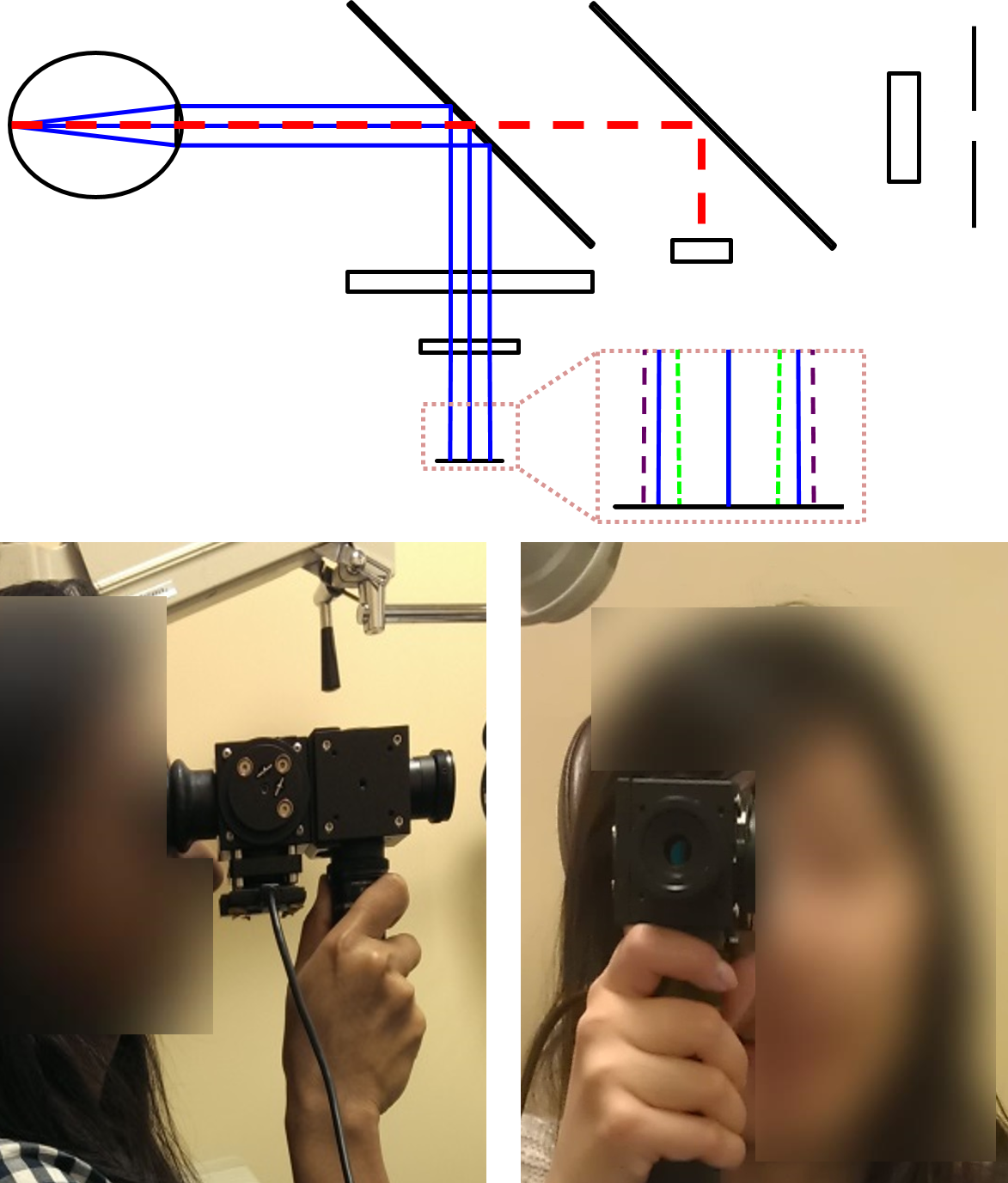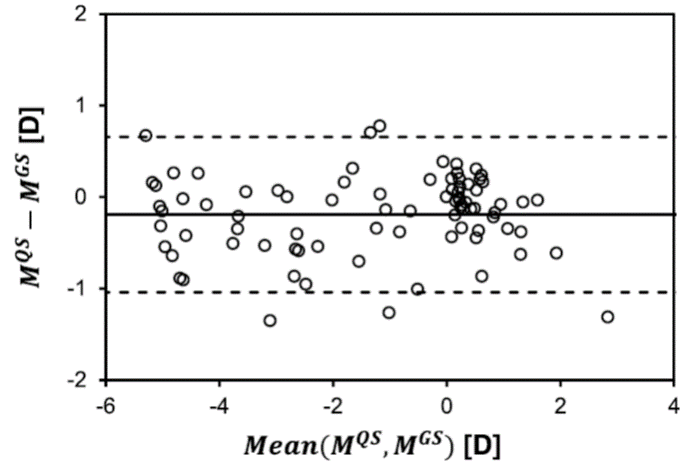Design and clinical evaluation of a handheld wavefront autorefractor
Durr NJ, Dave SR, Vera-Diaz FA, Lim D, Dorronsoro C, Marcos S, Thorn F, Lage E.
Optometry and Vision Science 92:12 2015.
DOI: 10.1097/OPX.0000000000000732
Abstract
Purpose: To introduce a novel autorefractor design that is intended to be manufacturable at low cost and evaluate its performance in measuring refractive errors.
Methods: We developed a handheld, open-view autorefractor (the “QuickSee”
Results: The spherical equivalent powers measured from both autorefractors correlate well with SR, with identical correlation coefficients of r = 0.97. Both autorefractors also agree well with each other, with a spherical equivalent power 95% confidence interval of ±0.84 diopters (D). The difference between the accuracy of each objective device is not statistically significant for any component of the power vector (p = 0.55, 0.41, and 0.18, for M, J0, and J45, respectively). The spherical and cylindrical powers measured by the GS agree within 0.25 D of the SR in 49 and 82% of the eyes, respectively, whereas the spherical and cylindrical powers measured by the QS agree within 0.25 D of the SR in 74 and 87% of the eyes, respectively.
Conclusions: The prototype autorefractor exhibits equivalent performance to the GS autorefractor in matching power vectors measured by SR.

